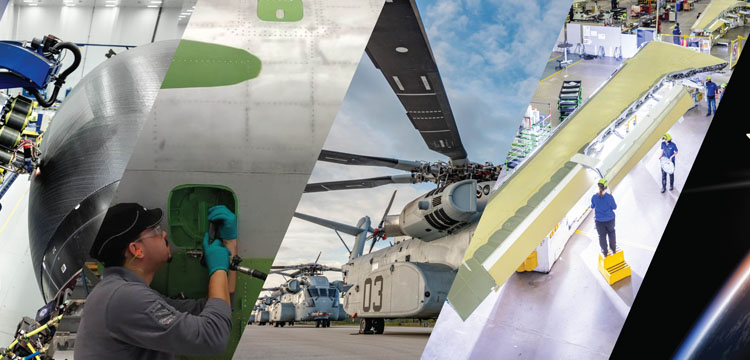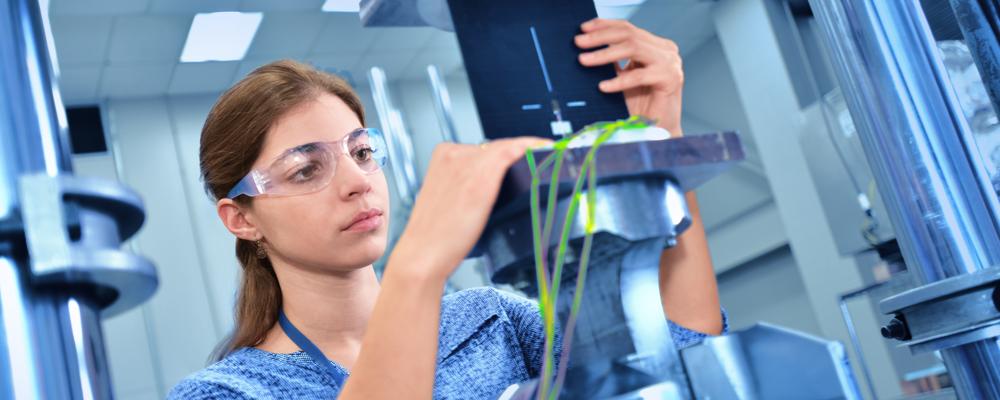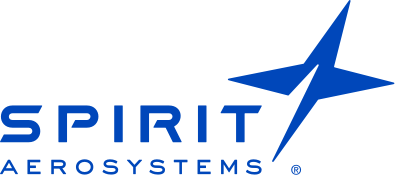

Inside Spirit AeroSystems’ Process for Materials Industrialization
WITH SPIRIT AEROSYSTEMS’ SENIOR DIRECTOR OF RESEARCH AND TECHNOLOGY, ERIC HEIN
The effort to manufacture hypersonic vehicles and weapons systems hinges on the ability to transform advanced materials into actual parts and structures. For decades, Spirit AeroSystems, headquartered in Wichita, Kan., has been developing and industrializing material systems for large-scale aerospace manufacturing — from the days of all-metal components and structures through two generations of composites and, now, to tests on ceramic matrix composites (CMCs) for higher-temperature applications.
“Among Spirit’s many strengths are its materials industrialization and systems integration expertise,” says Eric Hein. “Over the years we’ve shown our ability to take concepts and emerging materials into the manufacturing process, creating new solutions to meet high demands for quality and scale.”
Hein and his team are quick to cite Spirit’s previous work to construct aerostructures primarily of composites, a process developed by working together with key project partners.
In creating new composite-structure processes, Spirit built on its core knowledge as an airframe provider, applying that manufacturing know-how to the newly introduced material. “Working with key partners in the industry, we pioneered new automation systems for auto-fastening and large-scale composite manufacturing.”

“We’re already conducting research and testing on aluminum-oxide-based CMCs,” says Hein. “Just as with earlier programs, our relationships with innovators in material and systems development are key. As we look forward to the upcoming evolution in advanced materials, we’ll be able to either purchase the prepreg materials or infuse and cure them ourselves.”
Spirit is one of the best in the world at creating automated systems for working with these materials. We have built the required partnerships and we can bring those relationships to whatever the next program might be, including hypersonics.
”Hein and his team of advanced product developers believe the current process used for bringing composites into manufacturability will remain roughly the same for industrializing CMCs or other materials being developed for hypersonic aircraft:
• Developing the Material — Spirit will leverage its deep experience in transforming material systems by partnering with material providers to tailor those systems for performance and producibility requirements, and then iterate until those requirements are achieved. “For instance, we may move from a water-based system to a solvent-based one if we believe it provides a better-quality part for the end use,” says Hein.
• Building and Validating Performance — Once the material is deemed producible, Spirit will develop specifications, test coupons, and develop allowables for structural analysis.
• Structural Integration and Automation — As materials are utilized in new designs, Spirit’s Integrated Product Teams assure the materials and parts can be integrated with other structures. Larger, more complex test programs are executed to ensure requirements are met. At the same time, Spirit will be developing automated systems with machine-tool providers to streamline and scale up production.
Hein is confident that the approach taken at Spirit AeroSystems for other new materials will translate well, and that Spirit is ready to apply that knowledge to fill a critical need in defense manufacturing. “We’re adept at taking prototypes and low-volume programs and creating solutions for high-rate production, meeting stringent manufacturing qualifications and accelerating systems to market,” he says.
Eric Hein is Senior Director of Research and Technology at Spirit AeroSystems Inc., headquartered in Wichita, Kan. Hein oversees advanced product development, research and development, the strategic portfolio group aligning the company’s distinctive capability strategies with new and existing work statements, and the core structures team, including materials and process engineering, propulsion analysis, and test labs.


